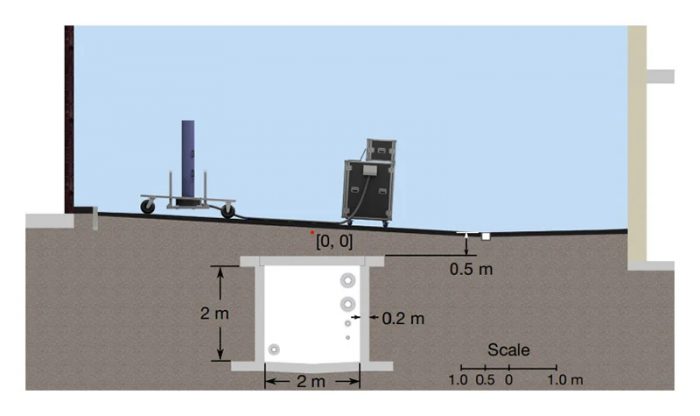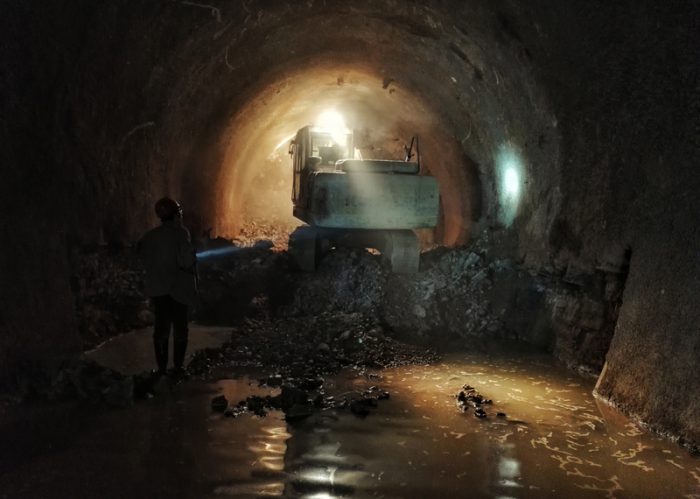What is the most mysterious part of Planet Earth?
Antarctica? The deep oceans? Good answers, for sure. But maybe no place on Earth is as unknown as the underground.
We're talking about parts of the world that you really can't know for certain until you literally dig it up. And once you do, is it even underground anymore? We know, right? Mind. Blown.
Speaking of mind-blowing, a brand new technological breakthrough is set to address this problem by allowing us to 'see' underground. It's called the quantum gravity gradiometer, and with a name like that, we're pretty sure it will be amazing!
Which way is up?
Many wireless video game controllers use gravity sensors to tell whether or not they're being moved through the air, at what angle, and how quickly. (Getty Embed)
The quantum gravity gradiometer is a type of gravity sensor. This sort of technology is actually pretty common in a lot of devices, like smartphones and many video game controllers.
These devices measure the direction and intensity of gravity. That's how a smartphone or tablet knows that you're tilting it to the side so it is time to switch the screen's angle. Or how a game controller can tell with exceptional accuracy how you're moving it through the air so that your onscreen character can wield a sword or aim a bow.
But how does this sort of technology let us peer underground? By taking it to the next level.
Which way is down!
Basically, there are very subtle differences in the strength of gravity. Some of that depends on how close you are to the object that is generating that gravity—in the case of Earth, that is the centre of our planet. But there are other factors, too.
Objects that are in between us and that source of gravity—and the density, or 'heaviness', of those objects—also affects the strength of gravity. Let's use this example.
Imagine a perfectly level patch of ground. Underneath part of it is a hollow underground chamber. Underneath another is loose soil. And then, there is ground that is made of extremely dense rock. The force of gravity will be strongest in the spot right above the dense rock. Next will be the loose soil. And the weakest gravity will be felt right above the hollow chamber. And how different will these three spots be.
Not very different at all.
Refined tastes

This diagram shows a test experiment where the gradiometer was used to locate an underground chamber. (Stray et al, Nature 2022)
In fact, the difference is so subtle, that we didn't have an instrument that could accurately measure it. Until the quantum gravity gradiometer, that is.
This device uses what is referred to as 'ultra-cold clouds of free-falling atoms' as a kind of filter through which to read the changes in gravity's pull. (Quantum, by the way, refers to things that are studied on the atomic level of size, a.k.a. more than microscopic.) We don't blame you for feeling confused—we also feel confused!
But this is enough of a breakthrough that scientists believe we will now be able to scan underground areas cheaply and with greater accuracy than ever before. And that will make projects like mining, building subways, digging the foundations of skyscrapers much easier. Imagine being able to know what lies beneath the ground before you dig. It could even lead to huge improvements in studying phenomenon like earthquakes and volcanoes.
Fascinating!
 Digging a tunneling project, like this subway, is always a bit of a mystery. This new device could make it easier to know what is hidden underground before you dig. (ID 87771019 © Shaowen1994 | Dreamstime.com)
Digging a tunneling project, like this subway, is always a bit of a mystery. This new device could make it easier to know what is hidden underground before you dig. (ID 87771019 © Shaowen1994 | Dreamstime.com)









